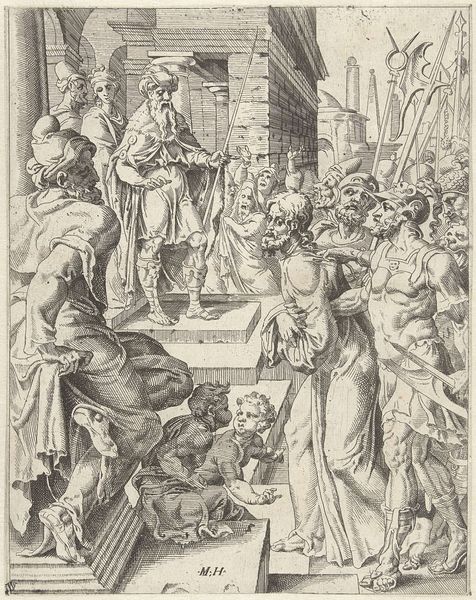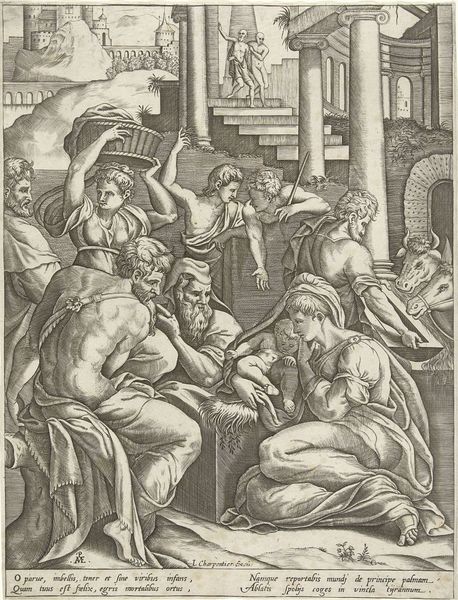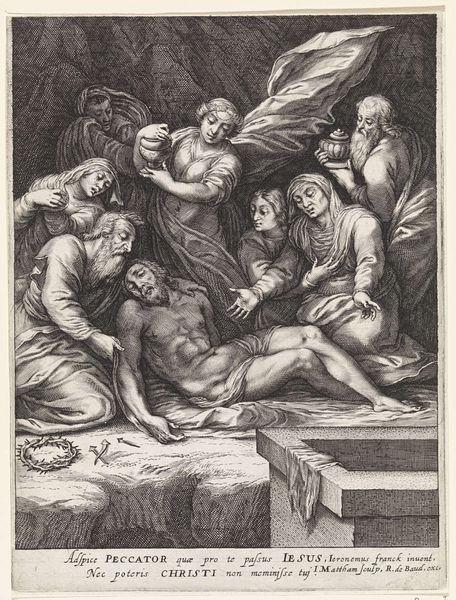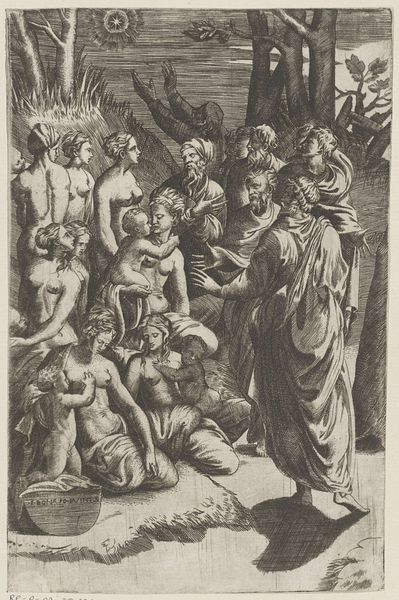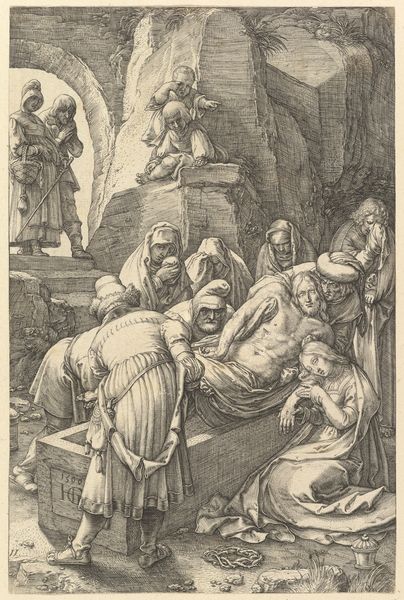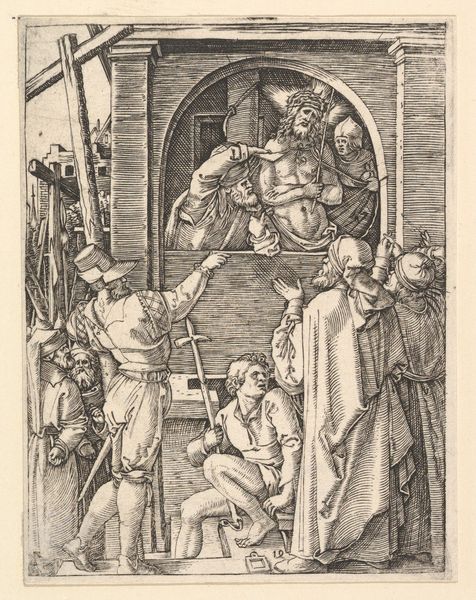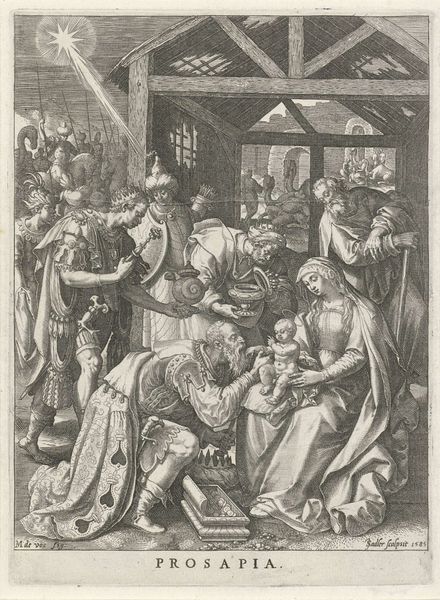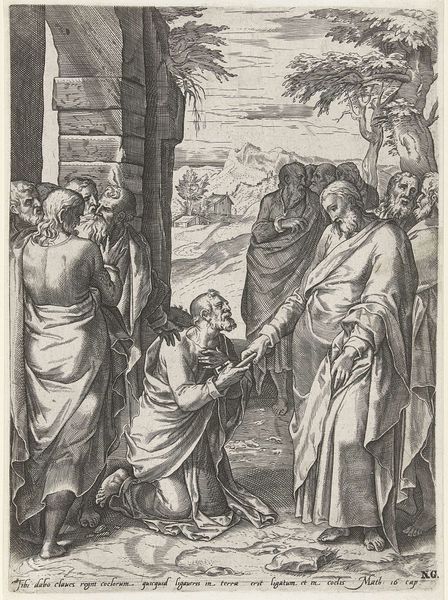
print, intaglio, engraving
# print
#
intaglio
#
figuration
#
line
#
history-painting
#
northern-renaissance
#
engraving
Dimensions: height 140 mm, width 105 mm
Copyright: Rijks Museum: Open Domain
Curator: This engraving, "The Entombment," dates back to between 1596 and 1598. It's attributed to Zacharias Dolendo and is currently held here at the Rijksmuseum. Editor: It’s heavy. Visually, I mean. All that meticulous linework—it's like a collective grief, carved onto the page, dense and suffocating. You can feel the weight of Christ as they carefully maneuver Him into the tomb. Curator: Absolutely. Dolendo was a master of intaglio, and that dense, cross-hatched style was popular during the Northern Renaissance. Prints like these weren't just artistic statements, though; they played a crucial role in disseminating religious imagery. They were affordable and could reach a broad audience at a time when the Church's authority was being challenged. Editor: See how theatrical the composition is, with that little spotlight casting light to this cave opening! Even this spherical candelabra looks like the globe of Earth—that feels like it means something? Almost like a stage production, highlighting the central tragedy? There’s even an audience in the tomb, watching from behind it. Curator: Religious prints were very didactic tools, indeed. That light definitely serves to draw your eye to the body. In that sense, it creates a connection between the viewer and this holy, tragic scene. Editor: The faces are captivating. Look at the way the figures cradle and care for the body of Christ—they seem really broken. Then you see a wreath of flowers down in the right of the engraving, perhaps meant to signify grief as a more permanent mark on your spirit. Even if this moment passes, there will always be pain that roots into the present moment. Curator: Dolendo also had collaborators—in this case, one is noted in the corner: a "P. Serwouters excudit". Often the engraver was making a copy of an image that had been produced by another designer or publisher. The circulation of images was a complex commercial enterprise that helped to spread these emotional scenes widely. Editor: So it was all about reaching more people. To move them, perhaps, or remind them of their own humanity? It makes this a political and creative act. What an incredible testament. Curator: Exactly. Dolendo's piece invites us to think about image circulation within Northern Europe at a pivotal historical moment, offering viewers narratives and experiences through its powerful themes.
Comments
No comments
Be the first to comment and join the conversation on the ultimate creative platform.

